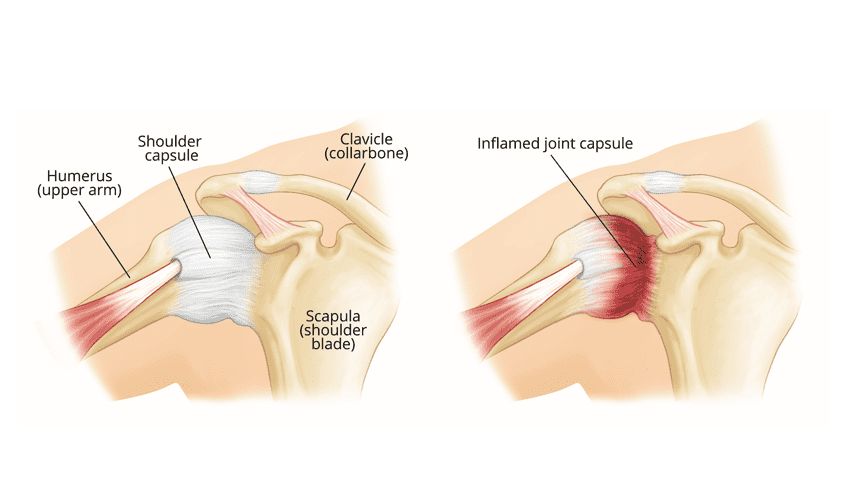Frozen Shoulder Treatment

Frozen shoulder, also known as adhesive capsulitis, is a condition characterized by pain and stiffness in the shoulder joint. Over time, the shoulder becomes increasingly difficult to move, and it may become completely immobilized. The condition typically develops gradually and has three stages: freezing, frozen, and thawing.
Causes of Frozen Shoulder
The exact cause is unknown, but frozen shoulder is more common in individuals who:
- Have experienced a shoulder injury or surgery.
- Suffer from diabetes, thyroid problems, or heart disease.
- Have been immobile for a long period due to injury, illness, or surgery.
Symptoms
- Pain and stiffness in the shoulder joint.
- Limited range of motion in the shoulder.
- Difficulty performing everyday tasks like reaching overhead or behind the back.
- Worsening pain at night, making it difficult to sleep.
Stages of Frozen Shoulder
- Freezing Stage: Pain increases, and range of motion begins to decrease. This stage can last from 6 weeks to 9 months.
- Frozen Stage: The shoulder may become stiffer, but pain may reduce. Lasts from 4 to 12 months.
- Thawing Stage: The shoulder begins to regain its range of motion. This can last from 6 months to 2 years.
Treatment for Frozen Shoulder:
The treatment for frozen shoulder aims to reduce pain, improve mobility, and restore function. Treatment options depend on the severity of the condition.
Non-Surgical Treatments:
Physical Therapy: Physical therapy is the cornerstone of frozen shoulder treatment. A trained therapist can guide you through exercises that stretch the shoulder capsule and improve mobility. Exercises should be done consistently and carefully to avoid worsening pain.
- Medications: Over-the-counter pain relievers such as NSAIDs (ibuprofen, naproxen) or prescription medications may be used to manage pain and inflammation.
- Corticosteroid Injections: Injections of steroids directly into the shoulder joint can help reduce pain and inflammation, allowing for better movement.
- Hot and Cold Therapy: Alternating heat and cold packs can help ease stiffness and reduce pain.
- Hydrodilatation: In this minimally invasive procedure, a sterile fluid is injected into the shoulder joint to stretch the capsule and improve range of motion.
Surgical Treatment
If non-surgical treatments fail, surgery may be considered to release the tight capsule and improve mobility.
- Arthroscopic Capsular Release: In this minimally invasive procedure, small incisions are made in the shoulder joint to release the tight capsule. This allows for increased movement. Recovery from this surgery involves physical therapy to maintain and improve shoulder mobility.
- Manipulation Under Anesthesia: While the patient is under anesthesia, the surgeon moves the shoulder joint in different directions to help release the tight tissues.
Home Exercises for Frozen Shoulder
Performing exercises at home is essential for improving mobility. Some basic exercises include:
- Pendulum Stretch: Lean forward, allowing your affected arm to hang down. Gently swing your arm in small circles.
- Towel Stretch: Hold a towel behind your back with both hands and gently stretch the affected arm by pulling upward with the good arm.
- Finger Walk: Use the fingers of your unaffected arm to walk up a wall, gently stretching the affected shoulder.
Recovery
Recovery from frozen shoulder can take several months to over a year. Patience and consistent rehabilitation are crucial for restoring full shoulder function. In most cases, frozen shoulder resolves on its own over time, but treatment can significantly speed up the recovery process and reduce discomfort.

